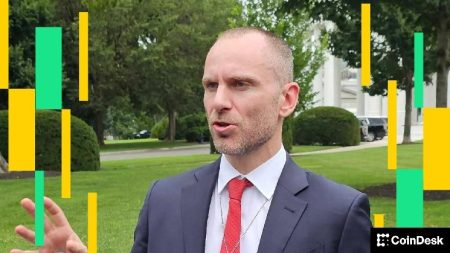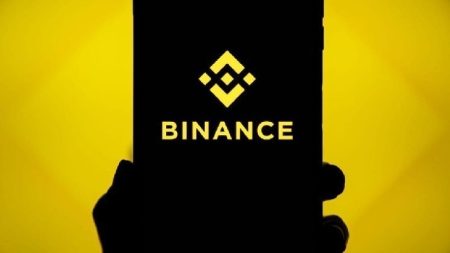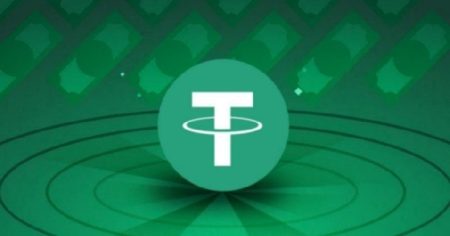Ethereum Foundation Announces Shutdown of Holešky Testnet Following Successful Run
Major Ethereum Testnet Reaches End of Life as Ecosystem Moves Forward with New Testing Infrastructure
In a significant development for the Ethereum ecosystem, the Ethereum Foundation has officially confirmed that Holešky, one of the network’s largest and most important testnets, will be decommissioned in the coming weeks. The announcement marks the end of an era for a testnet that has played a crucial role in Ethereum’s development journey, particularly in the testing of staking infrastructure and validator operations at scale.
The decision to sunset Holešky comes after nearly two years of service to the Ethereum community. According to the Foundation’s statement released on September 1st, the majority of validators on the Holešky network will be disabled approximately two weeks after the approval of the Fusaka upgrade. From that point forward, client teams, testing groups, and infrastructure providers will officially end their support for the testnet, effectively concluding its operational lifespan.
Holešky’s Legacy: A Cornerstone of Ethereum’s Testing Infrastructure
Launched in 2023, Holešky quickly established itself as Ethereum’s largest public testnet, creating a vital sandbox environment where developers could conduct extensive testing without risking real assets on the mainnet. The testnet was specifically designed to accommodate large-scale testing of staking infrastructure and validator operations, providing a realistic environment that closely mirrored the conditions of Ethereum’s mainnet.
During its active period, Holešky served as the proving ground for several critical protocol upgrades that subsequently made their way to Ethereum’s mainnet. The network hosted numerous high-stakes tests involving thousands of validators, including the pivotal Dencun upgrade and, more recently, the Pectra improvements. These tests were essential in identifying and resolving potential issues before implementing changes on the main Ethereum blockchain, where real financial value would be at stake.
“Holešky has been instrumental in Ethereum’s development cycle,” explained a senior developer involved with the testnet. “It provided us with an environment where we could push the network to its limits, test edge cases, and ensure that protocol upgrades would function as intended when deployed to mainnet. The data and insights gathered from Holešky testing have been invaluable to Ethereum’s evolution.”
Technical Challenges Lead to Testnet Transition
Despite its significant contributions to Ethereum’s development, Holešky began experiencing notable performance issues following the implementation of the Pectra testnet upgrade in early 2025. The network suffered from periods of inactivity, and perhaps most problematically, the validator exit queue grew to unmanageable lengths. This technical hurdle created a significant bottleneck in the testing process.
Although the network eventually recovered and resumed normal finalization operations, the extended validator exit queue presented an insurmountable challenge for developers. The situation made it practically impossible to test the complete lifecycle of validators within reasonable timeframes, severely limiting the testnet’s utility for further development work. This technical limitation ultimately became the catalyst for transitioning to a new testing environment.
“The validator exit queue issue essentially meant that we couldn’t efficiently test one of the most critical aspects of Ethereum’s proof-of-stake mechanism,” noted a protocol researcher familiar with the situation. “In a healthy network, validators need to be able to both enter and exit the system within predictable timeframes. When that process breaks down, it compromises our ability to thoroughly test protocol changes.”
Hoodi: The Next Generation of Ethereum Testing
In response to Holešky’s limitations, the Ethereum ecosystem launched a new testnet called Hoodi in March 2025. This next-generation testing environment was specifically designed to address the shortcomings identified during Holešky’s operation, offering developers a more efficient and constraint-free platform for future protocol testing.
Hoodi represents an evolution in Ethereum’s testing infrastructure, incorporating lessons learned from previous testnets including Holešky, Goerli, and Sepolia. The new testnet is expected to provide enhanced performance for validator testing, improved stability, and better scalability to accommodate the growing complexity of Ethereum’s protocol upgrades.
“With Hoodi, we’ve been able to implement several improvements that make the testing process more streamlined,” said a lead developer working on the new testnet. “We’ve specifically addressed the validator queue issues that plagued Holešky, ensuring that developers can test the complete lifecycle of validators without unreasonable delays. This makes Hoodi a much more practical environment for the kind of comprehensive testing that Ethereum requires.”
The Broader Implications for Ethereum’s Development Roadmap
The transition from Holešky to Hoodi reflects Ethereum’s commitment to continuous improvement in its development infrastructure. This methodical approach to testing has been a hallmark of Ethereum’s evolution, contributing significantly to the network’s stability and security despite implementing numerous complex protocol changes.
For the average Ethereum user, these behind-the-scenes changes to testing infrastructure may seem inconsequential, but they play a crucial role in ensuring the network’s reliability. Each testnet iteration brings Ethereum closer to achieving its vision of becoming a scalable, secure, and decentralized platform for applications and value transfer.
As Ethereum continues to advance its ambitious technical roadmap, including potential future upgrades focused on scaling, security, and user experience, the lessons learned from Holešky’s lifecycle will inform not only the operation of Hoodi but also the design of future testing environments. This institutional knowledge accumulation represents one of the most valuable assets in Ethereum’s ongoing development.
What’s Next for the Ethereum Ecosystem
With Holešky’s shutdown approaching and Hoodi now operational, the Ethereum ecosystem is well-positioned to continue its development trajectory without significant disruption. Developers, validators, and infrastructure providers have already begun migrating their testing operations to Hoodi, ensuring continuity in the protocol development process.
The Ethereum Foundation has encouraged all ecosystem participants who relied on Holešky for testing to complete their transition to Hoodi or other appropriate testnets before the shutdown occurs. This proactive approach aims to minimize any potential disruption to ongoing development projects or applications that may have been using Holešky as their testing environment.
Looking ahead, the Ethereum community can expect the development process to continue with the same methodical approach that has characterized its evolution thus far. While testnets may come and go, they each contribute valuable insights that help shape Ethereum’s future. As one chapter closes with Holešky’s retirement, another begins with Hoodi, carrying forward the essential work of building a more robust, scalable, and accessible blockchain platform for global use.
Note: This article is intended for informational purposes only and does not constitute investment advice.














